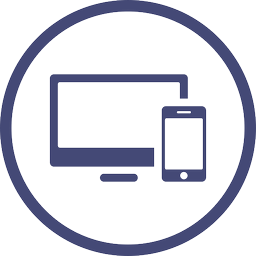Wearable technology has topped the charts in health and fitness trends for 2019. Every year the American College of Sports Medicine surveys world leading fitness experts for their thoughts. The survey, which ignores so called ‘fads’ placed wearable technology ahead of group fitness and HIIT training. ‘Wearables’ as they are commonly known include step counters, calorie counters, heart rate monitors, sleep monitors and GPS systems. Advanced wearable technologies combine different forms of biometric data to provide recommendations on recovery times between sessions.
The potential value of wearable technology
Having an insight into the amount and quality of your sleep, matched against markers of physiological strain such as heart rate, and training performance data can be highly valuable. In an age where big data is king, some would argue that not knowing your stats is foolish. And they have a point, to a point (see below). Having a record of what exercise you have done and the effect it has had on you is central to progressing your training. Progress with fitness is a simple process of planning training activities, executing your training plan, and reviewing its impact. Insights into variables such as sleep, training volume, training intensity and recovery times are all controllable and can be adapted.
Wearable technology can be especially motivating for those new to fitness training. The information that it provides can educate an individual on health, fitness, training and recovery. For example, step counters can be highly motivational to those embarking on a weight loss program for the very first time. Daily step counts provide a tangible goal for a person to chase. Young people who often find exercise for exercise sake very boring. Wearables are one way of engaging young people whilst they work out. Our experience of working with young people is that they gain much more benefit from play based fitness training. However, we come across an increasing number of parents, concerned for their child’s health, that try to tackle it with formal fitness training. Wearable technology is just one way in which we try to soften the blow and balance the needs of the child against the wishes of their parents (who are paying the bills!).
Placing wearable technology in perspective
We’d always recommend that you approach wearable technology with caution. Use it to gain ‘insights’ into your training. It is a tool to assist you but must not replace the human decision making part of training. As a personal trainer in Ascot I see a lot of clients using wearables! A common use is to count calorific expenditure during sessions. Those that know me will know that I pay little attention to the figure at the end of training. Why is this? The biggest reason is that any fitness session will have several objectives that are completely un related to calorie expenditure. Moving well, addressing muscle imbalances, injury prevention and energy system efficiency feature high on the priority list within a training session with NK Fitness. To judge the success of a session based purely on calories spent is very short sighted. Despite this, it’s very common. We spend a lot of time re aligning clients expectations for training and to look beyond the descriptive stats.
If we stay with the calorie example above there’s another potential flaw. How accurate is the info? How close to actual calorie expenditure is your wearable? Every device has an error of measurement, some of which are quite big. This may be due to the technology being used, or inherent in the equations used to calculate the data you get to read. This is why you should exercise caution with wearables and their data – your decisions are only as good as the information that you’re basing them on. Check out the standard error of measurement for your device (it tends not to be something the manufacturers shout about when selling you them).
Wearable technology as a source of demotivation?
Why do so many of the 10,000 steps per day crew quite their monitors within six months? The answer is simple. Failing to reach the target of 10,000 steps can be very demotivating. The target becomes a ‘monkey on your back’. Consistently failing to meet 10,000 steps can lead to a ‘What’s the point’ attitude and lead people to quit. There are also athletes who dismiss the recovery guidelines offered by wearable devices. For example, they’ve performed a demanding workout and their device recommends 36 hours before training again. The reality is often very different and the athlete feels ready to go again the very next day. Why adhere to some of the information but dismiss other data?
It may seem like we are bashing technology! Not at all. However, it is important simply to realise that throwing all of your weight behind the data your device gives you will cause you to miss out. Miss out on important qualitative info such as moods states, perception of effort and emotional wellbeing – all of which influence training productivity, recovery rate and progress. Never remove the human element from your training. If you use wearable technology then do so to inform your gut feeling and decision making. Doing so keeps you in touch with you. I’ve yet to come across a wearable that can tell me how hard to dig in when I’m competing!!
